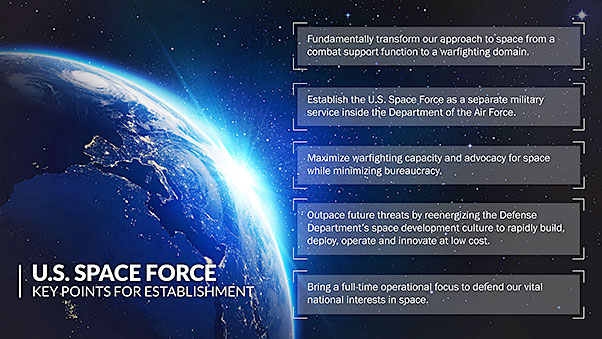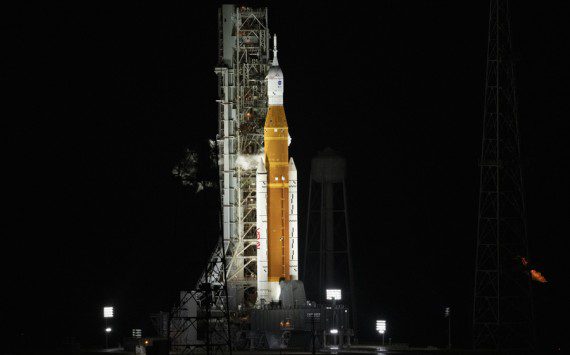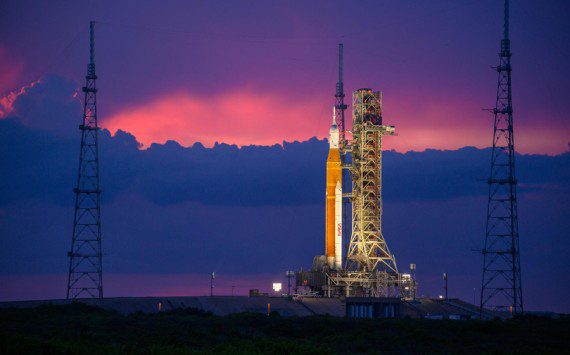The Defense Department has proposed legislation that would create the U.S. Space Force as the sixth branch of the armed forces.
If approved by Congress, the U.S. Space Force would be the first military service established since the Air Force stood up in 1947.
The new force recognizes how vital space is to U.S. economic prosperity and national security, Defense Department officials said. The legislative proposal follows a directive President Donald J. Trump signed Feb. 19.
DOD proposes that the U.S. Space Force initially be established as a new military service within the Department of the Air Force. In this model, the new Space Force would have a similar relationship to the Department of the Air Force that the Marine Corps has with the Department of the Navy, officials explained.
The uniformed four-star Space Force chief of staff would be granted full membership in the Joint Chiefs of Staff. Additionally, the proposal calls for a new undersecretary of the Air Force for space, who would provide dedicated civilian supervision of the Space Force.
If Congress passes the proposal, the Space Force would be authorized to organize, train and equip space forces “to provide for freedom of operation in, from and to the space domain; to provide independent military options for joint and national leadership; and to enable the lethality and effectiveness of the joint force,” the proposal says.
Threats from space
China and Russia recognize that U.S. space capabilities underpin the ability of the United States to project power around the globe. “China and Russia are actively developing a range of counter-space capabilities to deny the United States the advantages of space in a crisis or conflict,” an official said on background. “China and Russia are also rapidly developing space capabilities to enhance the lethality of their own military operations. There is an increased likelihood that the U.S. military will need to defeat the space capabilities of adversary forces in order to prevail in a potential conflict, protect lives and secure U.S. interests.”
China has demonstrated anti-satellite capabilities, and a recent report from the Defense Intelligence Agency says Russia is known to be developing them as well, officials said. China and Russia also are looking at all other aspects — from jamming to hacking to kinetics — to destroy or degrade U.S. space capabilities, they added.
Five-year plan
The Defense Department’s legislative proposal outlines a five-year phased stand-up of the Space Force beginning Oct. 1 — the start of fiscal year 2020 — if Congress passes the legislation. This will allow force leaders to prepare for mission transfer beginning in fiscal year 2021. The plan calls for the Space Force to continue to build out its force structure through fiscal year 2024.
Officials estimate that about 15,000 military and civilian personnel could transfer to the Space Force. Initially, most of the personnel in the new service will come from the Air Force, but soldiers, sailors and Marines also will be considered for transfer to the new force. “The secretary of defense, in consultation with each service secretary and service chief, will determine which existing space forces will transfer into the USSF after its creation,” a Pentagon official said.
DOD has established a full-time planning task force to conduct detailed planning for the new military service. The department’s fiscal year 2020 defense budget request asks for $72.4 million to begin the process of establishing the headquarters of the new service. The headquarters would be in the Pentagon.
Additional resources will be dedicated to building out the USSF headquarters and establishing and maintaining new support elements such as education, training, doctrine and personnel management centers, officials said. Once fully established, they added, the additive costs will be about $500 million annually, which they noted is about 0.07 percent of the annual DOD budget.
Officials explain U.S. Space Force need, culture
The U.S. Space Force will allow the Defense Department to deliver space capabilities and results faster, better and ahead of adversaries, Pentagon officials said March 1.
Officials spoke with reporters on background this morning in advance of the announcement that DOD delivered a proposal for establishing the sixth branch of the armed forces to Congress today. The proposal calls for the U.S. Space Force to lodge in the Department of the Air Force.
“What underpins the entire discussion is the importance of space to life here on Earth,” an official said. “Space truly is vital to our way of life and our way of war, and that has really been increasing over time.”
The Space Force will allow the department to face down the threats of great power competition in space, officials said.
Today, the United States has the best space capabilities in the world, they noted, but they added that this is not an entitlement. “Our adversaries have recognized that, and they recognize what space brings to the United States and our military,” an official said. “As a result, they are integrating space into their forces, and they are developing weapon systems to take away our advantages in a crisis or conflict.”
A war fighting domain
Space has changed the character of war. “Space is not just a support function, it is a warfighting domain in and of its own right where we really need to be prepared to compete, deter and win,” he said.
The Space Force is a strategic step forward that will bring greater focus to people, doctrine and capability needed to wage a war in space, officials said.
If Congress approves the proposal, the new service will grow incrementally over the next five fiscal years. Planners already are discussing the culture of the organization and what people they would like to see populate it. “We’re going to try to establish a unique culture — the special training, the care for promotions, development of doctrine,” another official said.
Pending passage, DOD will begin transferring personnel from the Air Force to the new service in fiscal year 2021 — most of the personnel in the U.S. Space Force will come from the Air Force. Army, Navy and Marine Corps personnel will be affected in later years. Civilian employees will come to the new service under the auspices of the Department of the Air Force, just as civilian employees of the U.S. Marine Corps work for the Department of the Navy.
Building a culture
On the military side, the service will look for individuals who will build the culture of the new service. “We want people to be recruited into the Space Force as similar to the way the Marine Corps recruits Marines,” a senior official said. “We don’t recruit [Marines] into the Navy — they go after the specific kind of people with a vision that is necessary to build that culture.”
It will take some time for Space Force service members to build that culture. “When you grow up in your service, you are a part of a culture and that is your mindset and focus,” a senior military officer said. “The Air Force includes space, but the personnel still grow up in an Air Force culture today. I would argue that if you ‘grow up’ in a Space Force where you are solely focused on the space domain, your ability to think clearly and focus on that domain will get after the problem set much more effectively.”
The force will look for people with a technical background to apply toward warfighting. “We need people who, at their core, understand what warfighting is and how to do those things that bring together that capabilities from across all services to pursue strategic objectives as part of the joint force,” another officer said.
If Congress approves, the U.S. Space Force will have about 15,000 people — the smallest U.S. armed force. “It is a small, but mighty group,” a senior official said. “As we look forward to the importance of space to our country and national security, it is really elevating it.”












